What is BPC-157?
BPC-157 (Body Protection Compound 157, Laboratory Cipher PL 14736) – synthetic peptide consisting of 15 amino acids. BPC-157 has a wide range of organoprotective effects under stressful conditions. Proteins and peptides of this type are released into the stomach along with gastric juice when exposed to stressors, including injuries and various diseases, and act as regulators of the digestive system’s anti-adoase protective mechanisms.
Scientists have conducted numerous studies on BPC-157 on animals, which have shown that it has a protective effect that goes beyond the gastric and intestinal tract: BPC-157 helps with gastric ulcers, intestinal damage, such as fistulas and inflammatory diseases, healing of bones and joints , joints, sovereign joints, as well as with injuries of organs, such as the pancreas. Current studies show that BPC-157 influences several growth factors usually involved in andiogenesis (blood vessel growth) and other processes involved in regeneration after damage. The crucial importance of gastroprotection under the action of BPC-157 in conditions of tissue inflammation, in particular in the formation of stress-induced gastric and duodenal ulcers, is highlighted.
BPC-157 pentadecapeptide has shown many potential health benefits. BPC-157 promotes healing of various lesions and wounds, demonstrating high cytoprotective activity. BPC-157 can prevent, attenuate or reverse the effects of lesions, thus counteracting both arterial and venous thrombosis. BPC-157 can balance collagen synthesis and influence liver fibrosis in chronic liver injury. The effects of BPC-157 also attenuate skin, muscle, tendon and ligament fibrosis, scarring and promote recovery of function. There is evidence that BPC-157 generates NO under ex vivo conditions. BPC-157 has beneficial effects in animals suffering from stroke, schizophrenia, depression and spinal cord injury within the gut-brain axis. In rat studies, after the carotid artery occlusion experiment, persistent damage to brain neurons, as well as memory and coordination disorders were eliminated.
Researchers have consistently shown that BPC-157 has a huge number of beneficial effects throughout the body. Theoretically, in the early stages of infection, BPC-157 could interfere with viral replication, improve blood vessel integrity, and suppress the onset of virus-induced cytokine cascades.
Human clinical studies are needed to confirm the potential therapeutic use of BPC-157 in patients, as most of the studies that speak to the drug’s effectiveness were conducted on animals. Below is the list of all the potentially most beneficial effects of this peptide.
Mechanism of action
BPC-157 interacts directly with the nitric oxide (NO) pathway to regulate blood vessel function and stimulate key growth factors. The main mechanism of NO-mediated wound healing is the formation of new blood vessels in a process called angiogenic repair. This means that more oxygen and energy can be supplied to the damaged site and recovery is quicker.
BPC-157 is responsible for stimulating the production of angiogenic cytokines such as VEGF, TGF-b and FGF. However, it does much more than just these growth factors and its full regenerative potential is extraordinary. Additionally, it upregulates anti-inflammatory gene transcription factor and growth hormone receptors, resulting in a better systemic recovery response. BPC-157 also stimulates the growth and proliferation of fibroblasts, which are vital to the formation of a structural protein in skin, bones and connective tissue called collagen.
During animal experiments, BPC-157 showed healing and cytoprotective activity. BPC-157 facilitates wound healing through accelerated angiogenesis (the process of formation of new blood vessels). The wound healing effect affects damage to muscles and tendons, affected vessels of the cecum, spinal cord injuries, portal fibrosis and hemorrhagic cystitis.
Healing of tendons and ligaments
Due to limited blood supply, spontaneous healing of tendons and ligaments is inherently poor. These soft tissues are very common targets in BPC-157 studies. In 2003, it was found that, compared to the severely impaired recovery observed in control rats, systemic administration of BPC-157 significantly improved the rats’ recovery. This was confirmed biochemically, micro and macroscopically. Biomechanically, healed tendons (within 14 days) showed increased load on tendon failure and increased function. Microscopic analysis showed more mononuclear cells, fewer granulocytes, an increase in fibroblasts and good formation of reticulin and collagen fibers. Macroscopically, the defects were smaller in size and depth, and the overall integrity of the tendon was subsequently restored. Similar results were also shown in 2010 in rat models studying medical collateral ligament healing after surgical incision. The results showed that BPC-157 significantly accelerated the growth of tendon explants; furthermore, the migration and propagation speed of tendon fibroblasts in vitro is increased.
Skeletal muscle healing
The positive therapeutic effect of BPC-157 has also been applied to traumatic and systemic muscle injury models. In 2006 it was reported that the use of BPC-157 promoted the healing of injured muscles. More importantly, healing continued for a prolonged period (72 days) maintaining functional recovery. We continued to compare the efficacy of systemic (intraperitoneal) and tropical (in the form of a thin layer of cream) treatment for 14 days in the continued gastrocnemius muscle in rats. BPC-157 significantly improved healing macroscopically, microscopically, and functionally, with reduced muscle proteolysis. The authors concluded that BPC-157 accelerates skeletal muscle healing after injury. The article proposes BPC-157 as an effective agent that can improve calf muscle healing when administered after injury.
In addition to muscle damage caused by direct injury, numerous studies have demonstrated that BPC-157 may have the ability to restore systemic muscle disorders in response to induced nervous, electrolyte disorders, and/or skeletal muscle atrophy, as noted in a review of 2019. Because systemic muscle pain is attributed to infections, autoimmune conditions, diseases, or medication side effects, it is considered more serious than stress or exercise-related muscle injuries.
Long-term therapeutic effect on injuries
In the 2017 study, the authors sought to explore the pro-angiogenic and therapeutic effects of BPC-157. BPC-157 has been shown to increase vascular density and accelerate the recovery of blood flow in ischemic muscle, indicating a stimulatory effect on angiogenesis.
Skin wounds
A balanced modulating effect on the healing of skin lesions was noted in a 1997 article. This study found that the combined collagen/inflammatory cell/angiogenesis triad was respectively improved and progressed more rapidly with the administration of BPC-157. Subsequent studies in the early 2000s were conducted on burns covering 20% of the total body surface area on the backs of mice. Accelerated burn healing was observed in mice treated with BPC-157 administered topically (as a cream) or systemically (intravenously).
The peptide also attenuated stomach burn stress injuries. An additional positive result is found in animals with severe burns treated with corticosteroids. At the same time, the pentadecapeptide BPC-157 healed burn wounds and counteracted corticosteroids, which cause worsening of burn healing. Administration of BPC-157 cured skin damage induced by alkaline burns, as shown in 2015. Similar results (i.e. skin wound repair and granulation tissue maturation), significantly facilitated by BPC-157, were obtained in pigs of small size.
Healing of the fistula
BPC-157 successfully treated several fistulas (review 2020): anastomosis between two defects in the respective tissues (e.g. esophagus and skin, stomach and skin, duodenum and skin, colon and skin, bladder and rectum; intestine and vagina) .
Therapy of circulatory disorders
Therapy of circulatory disorders with BPC-157 can be regarded as the realization of its wound healing effect. The modulating effect in wound healing can be even more interesting and effective due to the fact that BPC-157 reduces bleeding in wounds. Wound healing includes vasoconstriction, primary and secondary platelet obstruction, and thrombus resolution. This is seen together with the maintenance of the endothelium as a continuation of the cytoprotective capacity, together with the evidence that BPC-157 can counteract both developing and already formed arterial and venous thrombosis. In studies, direct venous damage, thrombosis, thrombocytopenia, and prolonged bleeding were reversed with this peptide.
BPC-157 and brain lesions
According to the 2020 review, BPC-157 has a direct therapeutic effect in post-stroke rats (i.e., counteracts damage caused by hippocampal ischemia/reperfusion). Furthermore, BPC-157 contributed to full functional recovery. BPC-157 also counteracts various encephalopathies. BPC-157 treatment regimens significantly attenuate brain damage caused by traumatic brain injury (weight loss); improved early outcomes and minimal delayed mortality are observed within the 24-hour period after injury in mice. Additionally, BPC-157 promoted recovery from severe muscle weakness that occurs with brain damage. These effects have the potential to represent a new therapeutic solution for the treatment of stroke, providing a specific beneficial effect on the central nervous system.
BPC-157 and ethanol (alcohol)
In acute ethanol intoxication, mice exhibit prolonged anesthesia, hypothermia, elevated blood counts due to ethanol, and a 25% mortality rate over a 90-minute elevation period. BPC-157, administered before or after ethanol intoxication, rapidly reverses the negative effects mentioned above. In addition, BPC-157 after a sharp cessation of ethanol use (continuous consumption of 20% alcohol for 13 days) reduces withdrawal symptoms (hangover). BPC-157 maintains vascular integrity by counteracting alcohol leakage into tissues. Researchers have consistently shown that BPC-157 strongly counteracts the effects of alcohol injected into the stomach of rats, namely rapid endothelial damage.
BPC-157 is a potential treatment for COVID-19
COVID-19 is primarily viewed as a thrombotic and vascular disease that affects andthelial cells throughout the body and can cause central vascular dysfunction. This explains the complications and multiorgan failure seen in COVID-19 patients, including acute respiratory distress syndrome, cardiovascular complications, liver damage, and neurological damage. Therefore, management of comorbidities and potential organ damage is critical to the clinical management of patients. BPC-157, based primarily on data from animal models, may improve the clinical management of COVID-19 through anti-inflammatory, cytoprotective, and endothelioprotective effects in various organ systems in various animal species. Consequently, discussion regarding its use as a potential prophylactic and adjunctive treatment is crucial. The article considers the hypothetical applicability of BPC-157 in COVID-19. The authors concluded that clinical trials of BPC-157 were needed.
Biological properties
- Promotes healing of various tissues including skin, mucous membranes, cornea, muscles, tendons, ligaments and bones
- Increases growth hormone receptor expression, which increases the effectiveness of growth hormone for tendon healing
- Promotes the growth of new blood vessels
- Therapeutic effect of various gastrointestinal diseases
- Protects the endothelium and prevents the formation of scar tissue
- Positive effect on blood vessels
- Better response of the body to viruses
- Increases the body’s anti-inflammatory properties
- beneficial effect on the central nervous system
- May reduce the gastrointestinal toxicity of other drugs
Side effects
Despite the abundance of experimental data obtained in vivo and in vitro confirming the activity and safety of BPC-157, very few clinical studies on the peptide are known. Scientific studies and clinical trials to date have not shown any significant, unwanted or toxic side effects in the study of the BPC-157 peptide. However, it is possible that further research in the future may reveal currently unknown risk factors.
- You may experience redness and pain at the injection site
- It is important to consider that the peptide has the ability to form new blood vessels, which can negatively affect metastases, tumor cells will be able to receive more blood with the help of the newly formed vessels.
How to use
BPC-157 injections are administered subcutaneously or intramuscularly. The injection is given once a day. The dosage of the drug is 5-10 mcg/1 kg of body weight. The duration of the cycle is on average 4-6 weeks or based on the effect obtained. Please note that the application scheme is individual and depends on the injury, load, age of the athlete.
Combination with other drugs
BPC-157 will have a synergistic effect for healing tendon injuries with drugs such as TB-500 and anabolic steroids for healing muscle tissue injuries due to the synergistic effect. As a result of the research, the growth hormone receptor was found to be one of the most extensively regulated genes in tendon fibroblasts by BPC-157. BPC-157 increased growth hormone receptor expression in tendon fibroblasts. Addition of growth hormone to BPC-157-treated tendon fibroblasts increased cell proliferation in a dose-dependent and time-dependent manner. In conclusion, BPC-157-induced increase in growth hormone receptor in tendon fibroblasts may enhance the proliferation-stimulating effect of growth hormone and promote tendon healing. Based on these studies, we can conclude that the use of BPC-157 together with growth hormone will have a much greater clinical effect.
How to prepare a solution
To prepare an injectable solution, you take a syringe already containing a diluent and inject it into a vial containing a lyophilized powder. Tilt the vial so that the needle touches the wall of the vial. Avoid injecting the diluent directly into the lyophilized powder. The solvent should flow slowly down the wall of the bottle (don’t fill it all at once and take your time).
Once all the diluent has been added to the peptide vial, mix gently (but do not shake or shake the vial) until the lyophilized powder has dissolved and a clear liquid remains. Now the drug is ready for use.
Never mix one peptide with another in the same syringe. This creates the risk that the fragile peptide molecules will be destroyed.
Usage
- The injection can be subcutaneous or intramuscular depending on personal preference.
Archiving
- The resulting solution can be stored for approximately 21 days in the refrigerator at a temperature of 2-8°C. The storage time increases if the solution was prepared using bacteriostatic water.

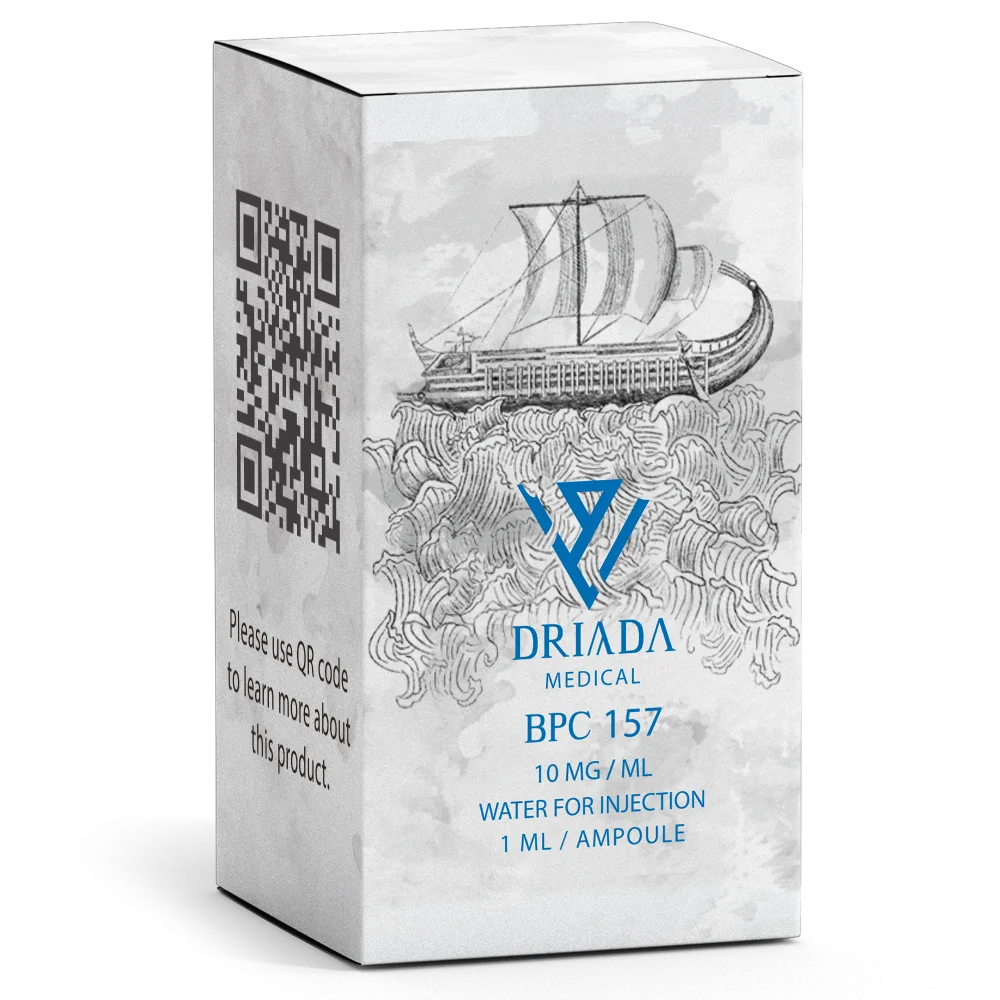
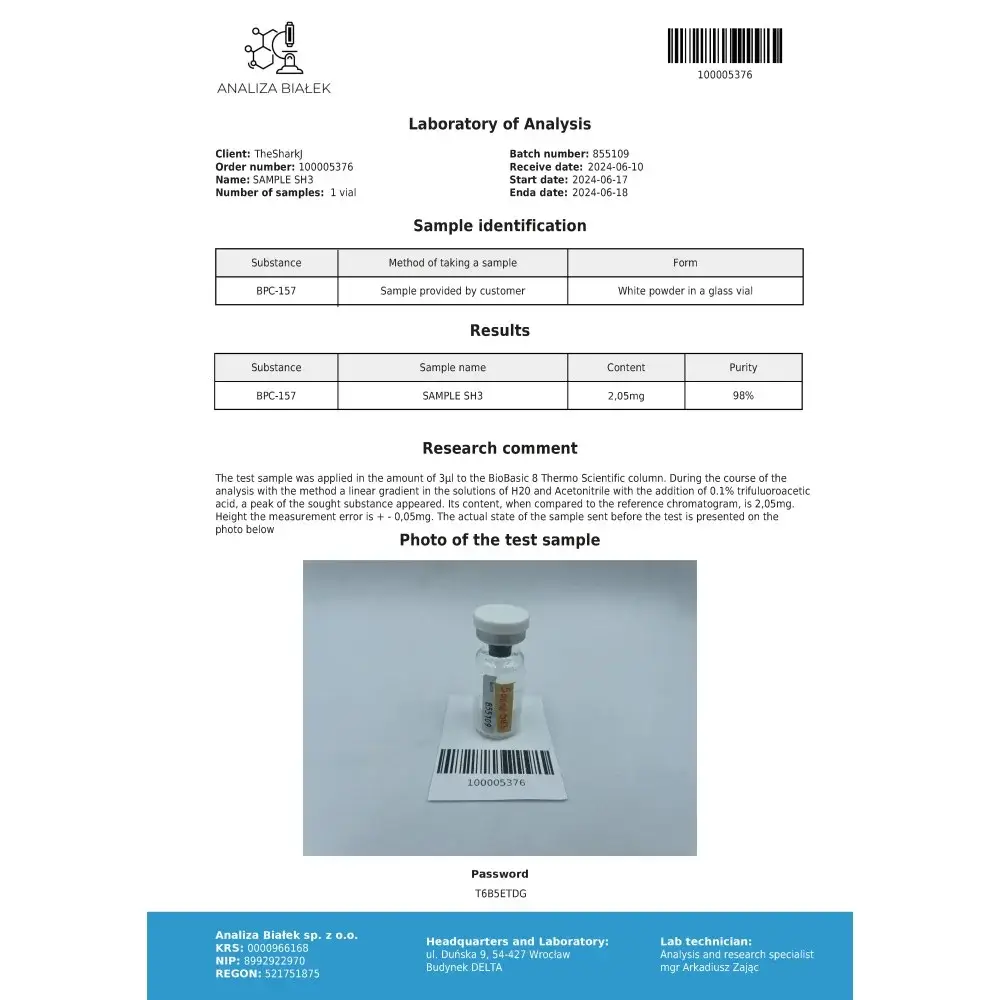


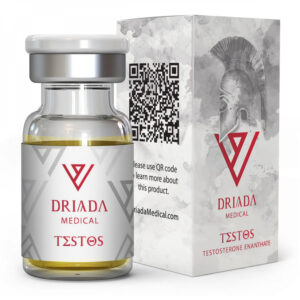


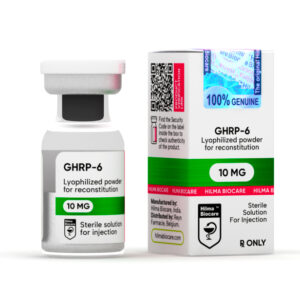
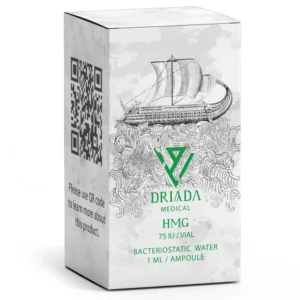
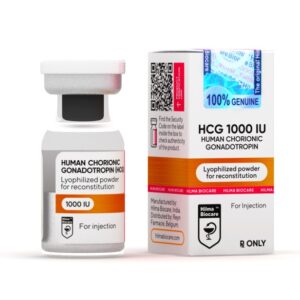


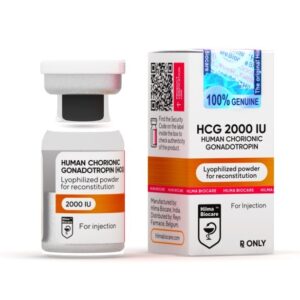
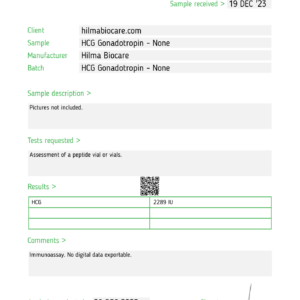
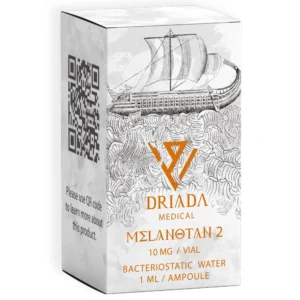

Reviews
There are no reviews yet.